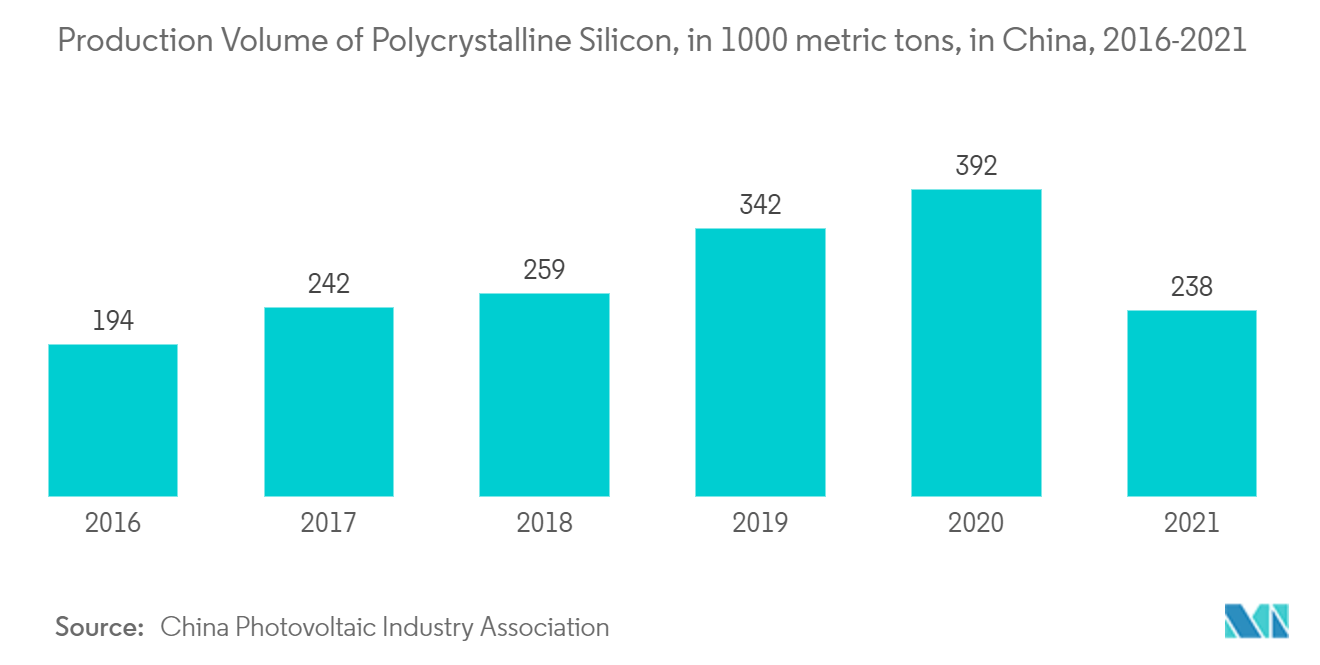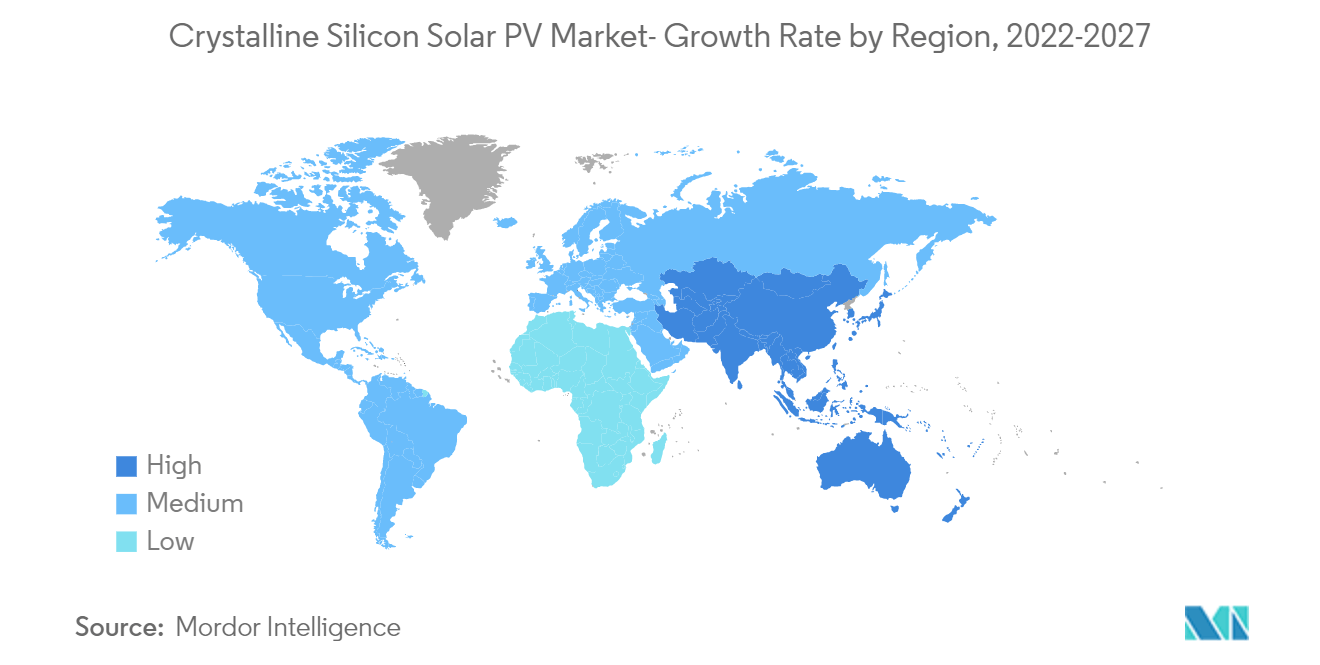Market Trends of Crystalline Silicon Solar PV Industry
This section covers the major market trends shaping the Crystalline Silicon Solar PV Market according to our research experts:
Multi-Crystalline Silicon PV is Expected to Dominate the Market
- Multicrystalline or Polycrystalline silicon wafers contain many silicon grains with different crystal orientations. These wafers are produced by crystallizing molten silicon by directional solidification in large crucibles. Multicrystalline silicon panels, due to their higher efficiency, are mostly preferred across many utility-scale and commercial solar installations.
- After years of falling prices, the cost of the raw material skyrocketed the previous year as a jump in demand overwhelmed existing manufacturing capacity. Many major manufacturers in China have opened new multi-crystalline silicon PV panels manufacturing plants with a combined capacity of 160,000 tons a year, adding to the current global capacity of about 620,000 tons. The country has reached a production volume of 238,000 metric tonnes of polycrystalline silicon by H1 2021.
- Multicrystalline solar panels are more eco-friendly than monocrystalline solar panels as they do not require individual shaping and placement of each crystal. Most of the silicon is utilized during production.
- Moreover, ATP Ingenieros Tecnicas Energeticas, is planning to commission its Carril Solar PV Park located in Spain with a capacity of 507MW using multi-crystalline solar modules by the end of 2023. The project is currently in permitting stage.
- Owing to the above points, multi-crystalline solar modules are expected to dominate the market during the forecast period.

Asia-Pacific is Expected to Dominate the Market
- Asia-Pacific, in recent years, has been the primary market for solar energy installations. With an additional installed capacity of around 78.01 GW in 2020, the region held a market share of about 58% of the global solar power installed capacity.
- The Levelized Cost of Energy (LCOE) for solar PV in the last decade reduced by more than 88%, because of which developing countries in the region, such as Indonesia, Malaysia, and Vietnam, saw an increase in solar energy installation capacity in their total energy mix.
- China is a major contributor to the solar energy market's growth in Asia-Pacific and globally. After the decrease in installed capacity addition in 2019 to only 30.05 GW, China recovered in 2020 and contributed an additional installed capacity of around 48.2 GW of solar power.
- In the year 2020, Prime Road Group Co Ltd has started the construction of 7 MW Banpu Yabuki Solar PV Plant. Yingli Solar (China) Co., Ltd. is supplying crystalline silicon solar panels to the plant located in Fukushima, Japan.
- Moreover, In July 2020, Vietnam has commissioned 50 MW Phuoc Thai 1 solar plant in Ninh Thuan province in Vietnam. Risen Energy has supplied Polycrystalline Solar panels for this project.
- Owing to above point Asia-Pacific is expected to dominate the market during the forecast period.


